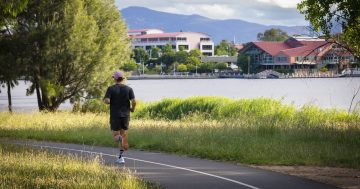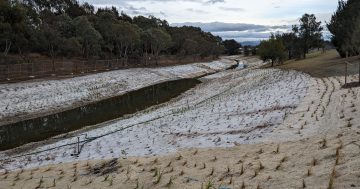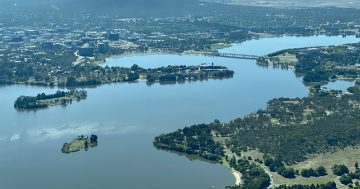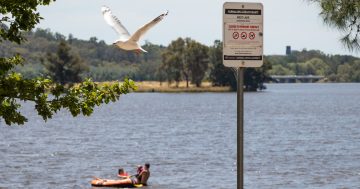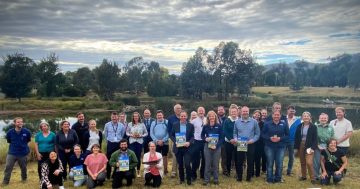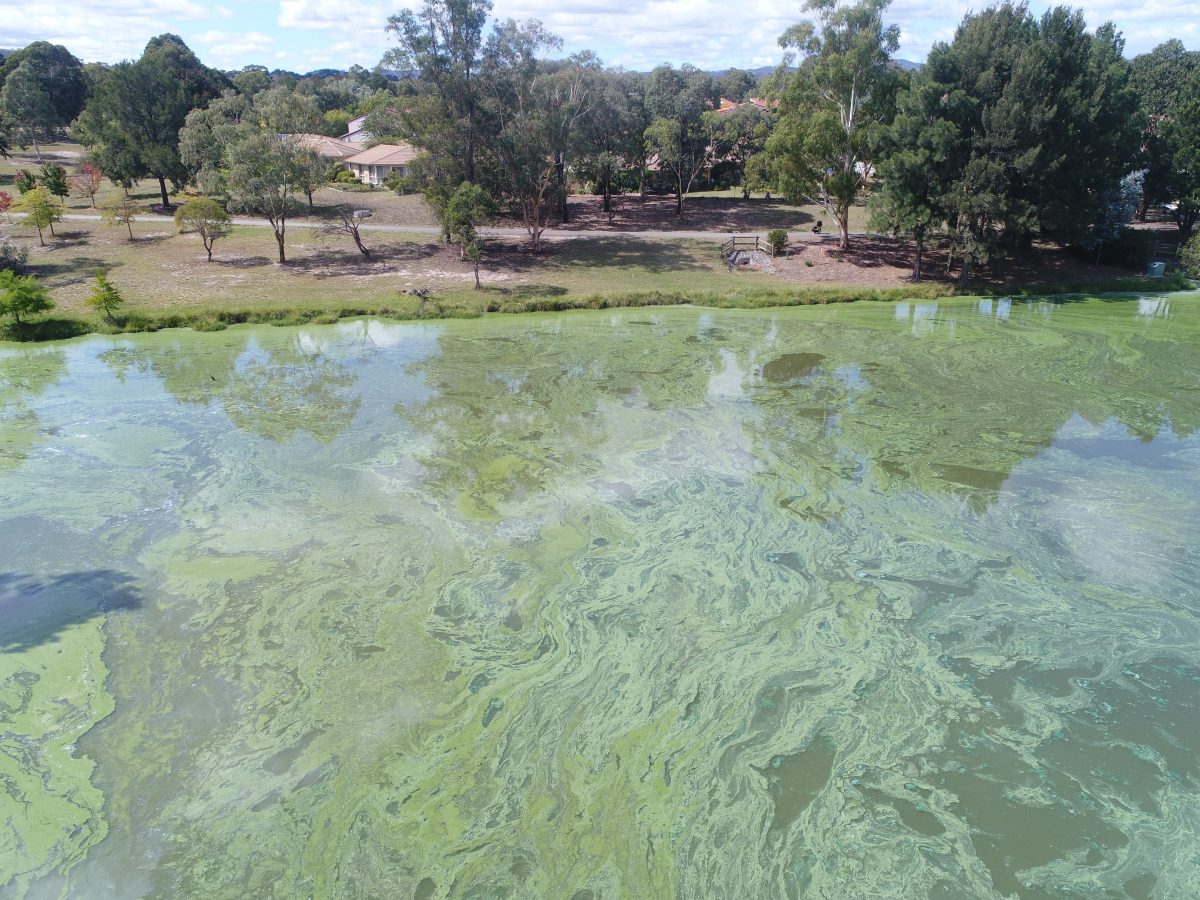
An algal bloom on Lake Tuggeranong in 2019. The lake is closed for primary contact on average about 15 weeks of the year due to poor water quality. Photo: Alica Tschierschke.
In the community and the Assembly, there has been much discussion about the state of Lake Tuggeranong and what we can do to fix its poor water quality.
Some people simply believe it’s doomed, but that’s not the case. There are things we can do to improve the water quality; measures are already in place to try to achieve this very goal.
But things can be done better, which is why I’m championing a new approach to improving water quality in our lakes and waterways.
For the past 25 years, the poor water quality of Lake Tuggeranong has been the subject of media reports and of increasing concern to residents. By all accounts, Lake Tuggeranong is the worst-affected waterway with regard to water quality in the ACT.
Sadly, we have become accustomed to hearing Lake Tuggeranong is suffering from blue-green algae outbreaks. The lake is closed for primary contact on average about 15 weeks of the year, about 30 per cent of the time.
Since 2014, the ACT Government has spent more than $35 million to address ongoing water quality issues in Lake Tuggeranong. Although I have been broadly supportive of these efforts, I now believe the right approach clearly isn’t being taken.
Tens of millions of dollars have been spent, yet Lake Tuggeranong still suffers the same problems it always has. Reports such as the 2021 Catchment Health Indicator Program gave Lake Tuggeranong a score of D+, or Poor, a drop from C- or Fair, in 2020.
There have been a number of new projects built, however the water quality in Lake Tuggeranong is not improving. Now, we are also seeing the neglect of some of those recently constructed assets, while other new assets continue to be built. This includes the government’s much-vaunted floating wetlands, which have been damaged several times and left to spread debris throughout the lake.
I have also previously reported the research project on the lake being damaged to the relevant minister several times, a pattern which raises obvious questions about the maintenance of these million-dollar assets.
There also appears to be a complete lack of collaboration between directorates when it comes to water quality. This is a complex issue, one like many that doesn’t fall neatly into a single directorate, despite this government’s approach.
Grass clippings from mowing in public areas being left to enter our stormwater assets has been brought up with the minister more times than I can count. Not just by me, but residents and his own government backbenchers. In hearings a few months ago, the relevant ministers did not even know they were responsible for the maintenance of water quality assets.
Water quality is an incredibly complex issue. It’s certainly one that won’t be solved overnight or without trial and error. However I firmly believe we can do things better and that a new approach must be taken to improve water quality in our lakes and waterways.
This new approach to water quality should be guided by the following principles:
- Clearly defined responsibilities and accountability for water quality across all areas of government
- Updated water quality targets, related policy, standards and guidelines to reduce the potential for algal blooms
- Introduce and practise good project management guidelines (plan, do, check, revise) before building more assets, to make sure the infrastructure is working as planned and designed
- Collect and analyse water quality data. We need to use good, defensible science; monitoring, recalibrating the water quality models, and using real local data, not general values
- Carrying out benefit-cost assessments of treatment options and targeted research of all available options before proceeding with new projects.
It’s time we elevate the conversation on improving water quality and ensure we’re getting the best results for ratepayers’ money.












